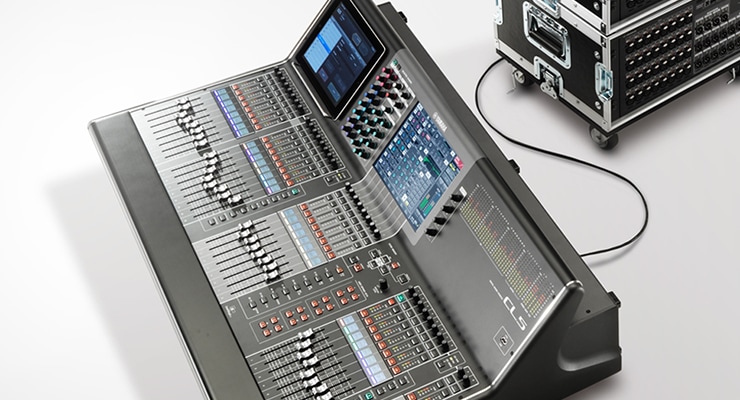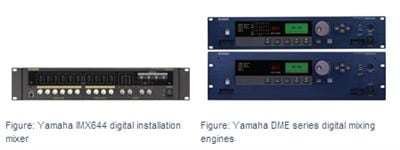Better Sound for Commercial Installations
Part 3: Mixers and Processors

08. Automated Mix Functions
One of the many benefits provided by digital sound systems is the ability to include convenient automated mix functions. Such functions can significantly reduce the burden on staff for basic BGM distribution and events such as speeches or lectures, eliminating the need for a sound professional to be available full time.
Useful Features for Commercial Installations

Below we'll introduce some of the features provided in the Yamaha IMX644 digital installation mixer and DME series digital mixing engines that can be useful in commercial installations.
Priority Ducker - Automated BGM attenuation (IMX644)

This function automatically lowers the volume of background music when a speech or announcement begins, and then returns the BGM to normal level when the announcement or speech finishes. The Priority Ducker function eliminates the need to manually adjust the BGM levels via a mixer, and the presenter or announcer can start and stop speaking at any time. This type of automated ducking can be particularly effective at facilities such as banquet halls, restaurants, or shopping centers, etc., where BGM is normally playing most of the time, but occasional announcements or speeches make it necessary to lower the BGM level accordingly.
Music Override - Automated program switchover (IMX644)

When a stereo signal (music or other program material) is applied to a specified stereo input pair, the BGM that is normally playing is automatically faded out completely so that only the new program material remains. This can be particularly useful at amusement facilities, banquet rooms, and retail outlets where different types of music or sound are used to support the overall program. It could be used to insert a fanfare at an appropriate time, for example, or change the mood at parties. Music Override can be a powerful production tool for a wide range of applications.
(One example of the many possible uses for Music Override: switch from normal BGM to a birthday song to surprise a guest.)
Ambient Noise Compensation - Automated background noise level compensation (DME series)

At shopping centers and other public spaces, background noise levels can change significantly according to the day of the week and the time of day. The more people in the area, the higher the background noise level. If the level is not adjusted to match, the sound system may be inaudible at times when the noise level is high, and may be too loud during low-noise periods. Making appropriate adjustments manually can be a full-time job, but the Ambient Noise Compensation function makes the process automatic. The ambient noise level is constantly monitored via a microphone, and the sound system output level is adjusted to match automatically.
Ambient Noise Compensation eliminates the need for repeated manual adjustments.
Auto Gain Control - Automated level matching for the speaker (DME series)

For announcements and teleconferences, where a microphone is used to deliver sound to a remote location, differences in the loudness of the speaker's voice and distance from speaker's mouth to microphone can cause large variations in the level delivered by the sound system. The sound might be unbearably loud, or too soft to be heard clearly. That can be stressful for the listener, and impede the progress of a conference. Adjustments could be made for each individual speaker, but that would require a considerable amount of dedicated effort. The solution is to use the Auto Gain Control function that automatically adjusts for differences in input level in order to maintain a constant, clear output level.
(Auto Gain Control automatically compensates for different speakers to maintain consistent level and intelligibility.)
The automated mix functions described above are just some of the many that are available and worth considering when you're planning a new sound installation.
Contents
The sound systems that broadcast the information you're hearing have been carefully designed and installed to suit the needs of each individual facility.
This series offers information aimed at achieving the best possible sound in commercial installations, from the basics to equipment selection and day-to-day operation.








